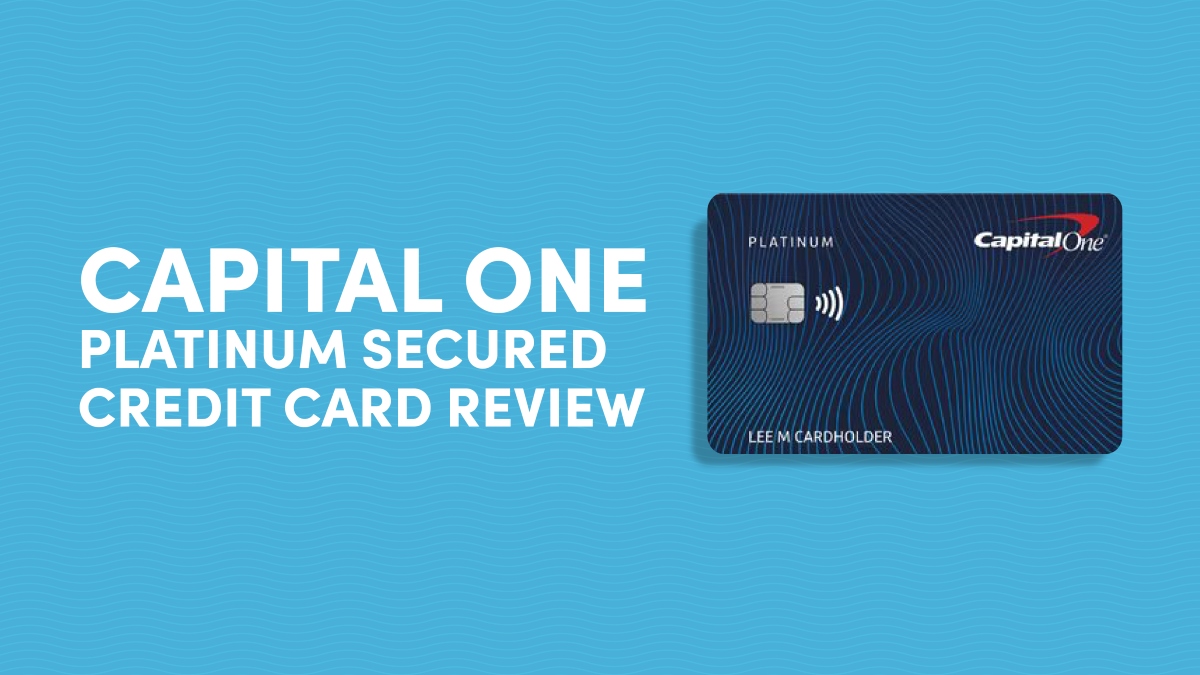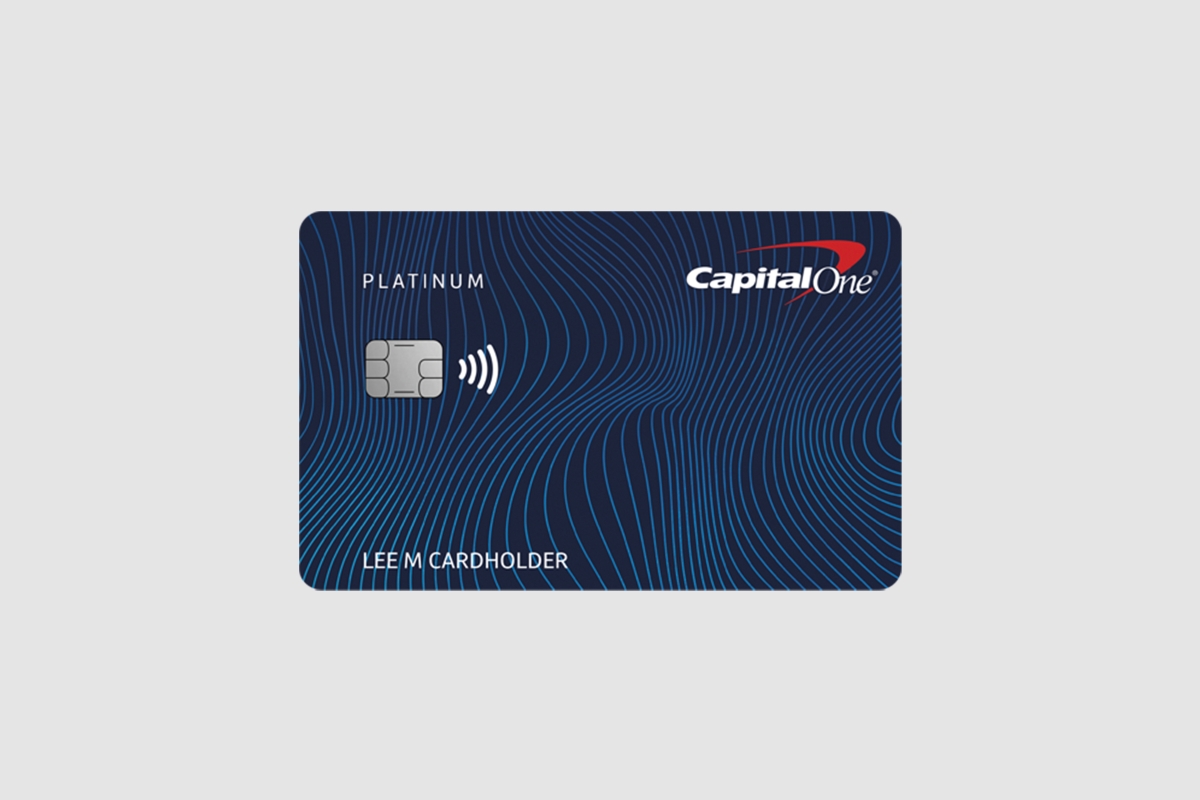Home>Finance>When Will I Receive My Deposit Back From A Capital One Secured Card?


Finance
When Will I Receive My Deposit Back From A Capital One Secured Card?
Published: March 1, 2024
Learn about the timeline for receiving your deposit back from a Capital One Secured Card to manage your finances effectively. Understand the process and plan ahead.
(Many of the links in this article redirect to a specific reviewed product. Your purchase of these products through affiliate links helps to generate commission for LiveWell, at no extra cost. Learn more)
Table of Contents
Introduction
Secured credit cards are valuable tools for individuals looking to build or rebuild their credit. Among the various secured card options available, the Capital One Secured Card stands out as a popular choice due to its accessibility and potential for credit score improvement. When applying for a Capital One Secured Card, individuals are required to submit a security deposit, which serves as collateral and determines their credit limit. The deposit amount can range from $49 to $200, depending on the applicant's creditworthiness.
Receiving the deposit back from a Capital One Secured Card is a common inquiry among cardholders, especially those who have demonstrated responsible financial behavior and are eager to transition to an unsecured credit card. Understanding the timeline and process for deposit refund is essential for individuals seeking to maximize the benefits of their secured card and potentially reclaim their deposit funds.
In this article, we will delve into the nuances of receiving a deposit back from a Capital One Secured Card. We will explore the factors that influence the return of the deposit, the typical timeline for refund, and practical tips for ensuring a smooth and timely deposit refund process. By gaining insight into these aspects, cardholders can effectively manage their financial expectations and make informed decisions regarding their credit journey with Capital One.
Understanding Capital One Secured Card Deposits
When applying for a Capital One Secured Card, prospective cardholders are required to provide a security deposit to establish their credit line. The deposit amount is determined based on the individual’s creditworthiness and can range from $49 to $200. This deposit serves as collateral and mitigates the risk for the card issuer, allowing individuals with limited or damaged credit histories to access a credit card and begin rebuilding their financial standing.
Capital One holds the security deposit in a separate account and utilizes it as a safeguard in the event that the cardholder defaults on their payments. Despite the deposit being held as collateral, it does not directly offset the cardholder’s monthly payments. Instead, the deposit secures the credit line and provides the cardholder with the opportunity to demonstrate responsible credit usage.
It’s important to note that the security deposit is refundable, subject to certain conditions. Cardholders can potentially receive their deposit back under the following circumstances:
- Graduation to an unsecured card: After establishing a pattern of responsible credit behavior, some Capital One Secured Cardholders may qualify for an upgrade to an unsecured credit card. In such cases, the security deposit is typically refunded, and the card transitions to an unsecured status.
- Account closure: Should a cardholder decide to close their Capital One Secured Card account, they may be eligible for the return of their deposit, provided that the account balance is paid in full.
Understanding the purpose and conditions surrounding the security deposit is crucial for individuals embarking on their credit-building journey with a Capital One Secured Card. By comprehending the role of the deposit and the potential scenarios for its refund, cardholders can approach their credit management with clarity and informed expectations.
Factors Affecting Deposit Refund
Several factors come into play when considering the refund of a security deposit for a Capital One Secured Card. While the prospect of reclaiming the deposit is a significant incentive for responsible credit management, it’s essential to be aware of the variables that can influence the refund process.
One of the primary determinants of deposit refund eligibility is the cardholder’s credit behavior and financial responsibility. Capital One assesses the account history, including factors such as on-time payments, credit utilization, and overall account management. Demonstrating consistent and responsible credit usage can significantly impact the likelihood of receiving the deposit back, especially if the cardholder is seeking an upgrade to an unsecured card.
Additionally, the account’s standing at the time of potential deposit refund plays a crucial role. If the cardholder has outstanding balances or unresolved issues with the account, such as delinquencies or payment disputes, the eligibility for a deposit refund may be affected. It’s imperative for cardholders to maintain a positive account status and address any outstanding obligations before pursuing the return of their deposit.
Furthermore, the duration of card ownership and deposit retention period can impact the timing of the refund. While there is no specific timeframe guaranteed for deposit refund, Capital One typically reviews secured card accounts for potential upgrade or refund after a period of responsible card usage, often ranging from 12 to 18 months. Cardholders should be mindful of this timeline and continue exhibiting prudent financial habits to enhance their chances of deposit refund eligibility.
Lastly, individual circumstances, such as changes in creditworthiness or financial stability, can influence the deposit refund process. Cardholders experiencing improvements in their credit profile or undergoing significant changes in their financial situation may find themselves better positioned for a deposit refund or an unsecured card upgrade.
By understanding these factors, Capital One Secured Cardholders can proactively navigate their credit management journey and optimize their prospects for a deposit refund. Responsible financial conduct and a proactive approach to account management are instrumental in maximizing the potential for reclaiming the security deposit.
Process for Receiving Deposit Back
Receiving the security deposit back from a Capital One Secured Card involves a structured process that encompasses various considerations and potential pathways for deposit refund. While the specific timeline and requirements may vary based on individual circumstances, understanding the general process can provide cardholders with clarity and a roadmap for managing their deposit refund expectations.
Upon meeting the eligibility criteria for a deposit refund, such as demonstrating responsible credit behavior and maintaining a positive account standing, cardholders may explore the following avenues for receiving their deposit back:
- Upgrade to an unsecured card: One of the primary routes for deposit refund is through the transition from a secured card to an unsecured credit card. Capital One periodically reviews secured card accounts to assess the cardholder’s credit progress and may offer an opportunity to upgrade to an unsecured card. Upon approval for the unsecured card, the security deposit is typically refunded to the cardholder, marking the completion of the secured card phase.
- Account closure: In cases where a cardholder decides to close their Capital One Secured Card account, they may be eligible for the return of their security deposit. It’s important to note that the account balance should be paid in full before initiating the account closure process. Upon closure, Capital One will review the account for deposit refund eligibility and facilitate the return of the deposit funds, typically through a check or electronic transfer.
It’s crucial for cardholders to proactively engage with Capital One to explore these options for deposit refund. This may involve reaching out to customer service or monitoring account notifications for potential upgrade or refund offers. Additionally, maintaining open communication with Capital One and staying informed about account developments can contribute to a smoother and more transparent deposit refund process.
While the process for receiving the deposit back requires adherence to certain conditions and timelines, cardholders can leverage their responsible credit management and financial prudence to position themselves for a successful deposit refund outcome. By staying attuned to account updates and proactively exploring refund opportunities, individuals can navigate the deposit refund process with confidence and clarity.
Tips for Ensuring Prompt Deposit Refund
For Capital One Secured Cardholders seeking a timely and efficient refund of their security deposit, several proactive strategies can enhance the likelihood of a prompt deposit refund process. By implementing the following tips, cardholders can optimize their credit management approach and position themselves for a successful deposit refund outcome:
- Maintain exemplary credit behavior: Consistently demonstrating responsible credit habits, such as making on-time payments and managing credit utilization, can significantly impact the eligibility for deposit refund. By maintaining a positive credit profile, cardholders can bolster their case for deposit refund consideration, particularly when seeking an upgrade to an unsecured card.
- Regularly monitor account status: Staying informed about the status of the Capital One Secured Card account is essential for identifying potential opportunities for deposit refund. Cardholders should actively monitor account notifications, review account statements, and stay attuned to communications from Capital One regarding account reviews or upgrade offers.
- Engage with customer service: Establishing open communication with Capital One’s customer service team can provide valuable insights into deposit refund eligibility and potential pathways for securing the refund. Cardholders can inquire about the status of their secured card account, seek clarification on deposit refund procedures, and express their interest in exploring options for an unsecured card upgrade.
- Consider credit limit increases: Requesting and responsibly managing credit limit increases on the Capital One Secured Card can showcase the cardholder’s creditworthiness and responsible credit utilization. A higher credit limit, if approved, demonstrates financial progress and may contribute to the consideration for an unsecured card upgrade and deposit refund.
- Plan for potential account closure: While pursuing an upgrade to an unsecured card is a common pathway for deposit refund, cardholders should be prepared for the possibility of account closure. Ensuring that the account balance is paid in full and addressing any outstanding obligations can facilitate a smoother account closure process and subsequent deposit refund evaluation.
By proactively implementing these tips and maintaining a proactive approach to credit management, Capital One Secured Cardholders can enhance their prospects for a prompt and successful deposit refund. Responsible financial conduct, clear communication with the card issuer, and strategic account management are instrumental in navigating the deposit refund process and maximizing the benefits of the secured card experience.
Conclusion
Understanding the nuances of deposit refund from a Capital One Secured Card is pivotal for individuals seeking to optimize their credit-building journey and potentially reclaim their security deposit. The deposit refund process is influenced by various factors, including credit behavior, account standing, and potential pathways for refund, such as upgrading to an unsecured card or initiating account closure.
By comprehending the dynamics of deposit refund eligibility and the process for reclaiming the deposit, cardholders can approach their credit management with clarity and informed expectations. Proactive engagement with Capital One, responsible credit behavior, and a strategic approach to account management are instrumental in maximizing the potential for a successful deposit refund outcome.
As individuals navigate their credit journey with a Capital One Secured Card, maintaining open communication with the card issuer, staying attuned to account updates, and proactively exploring refund opportunities can contribute to a smoother and more transparent deposit refund process. Furthermore, consistently demonstrating financial prudence and responsible credit habits can enhance the likelihood of deposit refund eligibility and prompt refund processing.
Ultimately, the Capital One Secured Card serves as a valuable tool for individuals looking to build or rebuild their credit, and the potential for deposit refund underscores the card’s benefits as a stepping stone toward financial progress. By leveraging the insights and tips outlined in this article, cardholders can empower themselves to navigate the deposit refund process with confidence and optimize their credit management strategy for a successful financial future.














